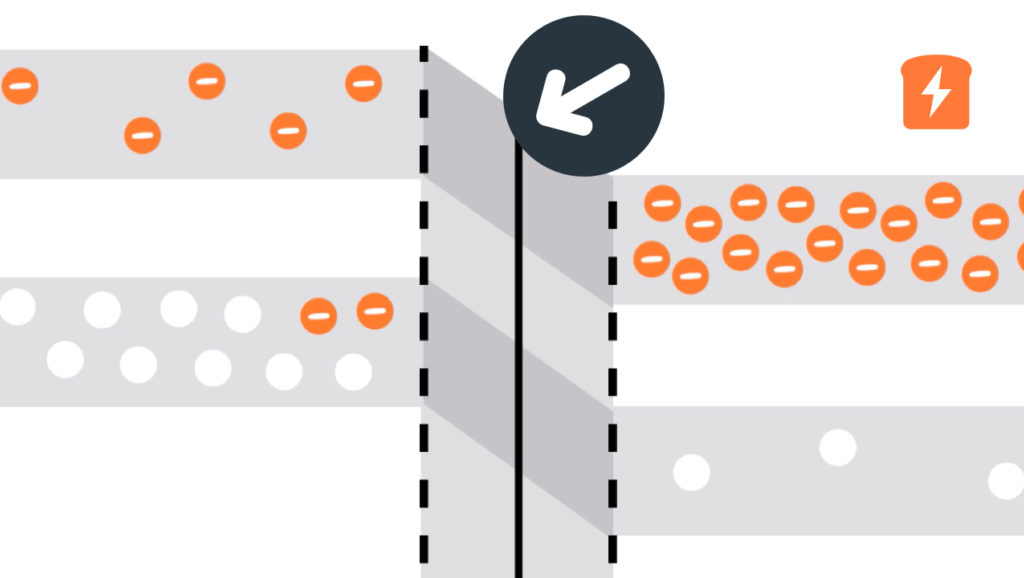Intrinsic semiconductor
An intrinsic semiconductor is an undoped semiconductor, or semiconductor in the raw form without any impurities to add current carriers to the basic semiconductor material. In an intrinsic semiconductor, the number of holes and free electrons are equal.
A semiconductor material with only one type of atom.
Grob’s Basic Electronics, 11th Edition by Mitchel E. Schultz
An intrinsic(pure) semiconductor, also called an undoped semiconductor or i-type semiconductor, is a pure semiconductor without any significant dopant species present. The number of charge carriers is therefore determined by the properties of the material itself instead of the amount of impurities. In intrinsic semiconductors the number of excited electrons and the number of holes are equal: n = p. This may even be the case after doping the semiconductor, though only if it is doped with both donors and acceptors equally. In this case, n = p still holds, and the semiconductor remains intrinsic, though doped.
The electrical conductivity of intrinsic semiconductors can be due to crystallographic defects or electron excitation. In an intrinsic semiconductor the number of electrons in the conduction band is equal to the number of holes in the valence band. An example is Hg
0.8Cd
0.2Te at room temperature.
An indirect band gap intrinsic semiconductor is one in which the maximum energy of the valence band occurs at a different k (k-space wave vector) than the minimum energy of the conduction band. Examples include silicon and germanium.A direct band gap intrinsic semiconductor is one where the maximum energy of the valence band occurs at the same as the minimum energy of the conduction band. Examples include gallium arsenide.
A silicon crystal is different from an insulator because at any temperature above absolute zero, there is a non-zero probability that an electron in the lattice will be knocked loose from its position, leaving behind an electron deficiency called a "hole". If a voltage is applied, then both the electron and the hole can contribute to a small current flow.
The conductivity of a semiconductor can be modeled in terms of the band theory of solids. The band model of a semiconductor suggests that at ordinary temperatures there is a finite possibility that electrons can reach the conduction band and contribute to electrical conduction.
The term intrinsic here distinguishes between the properties of pure "intrinsic" silicon and the dramatically different properties of doped n-type or p-type semiconductors.







